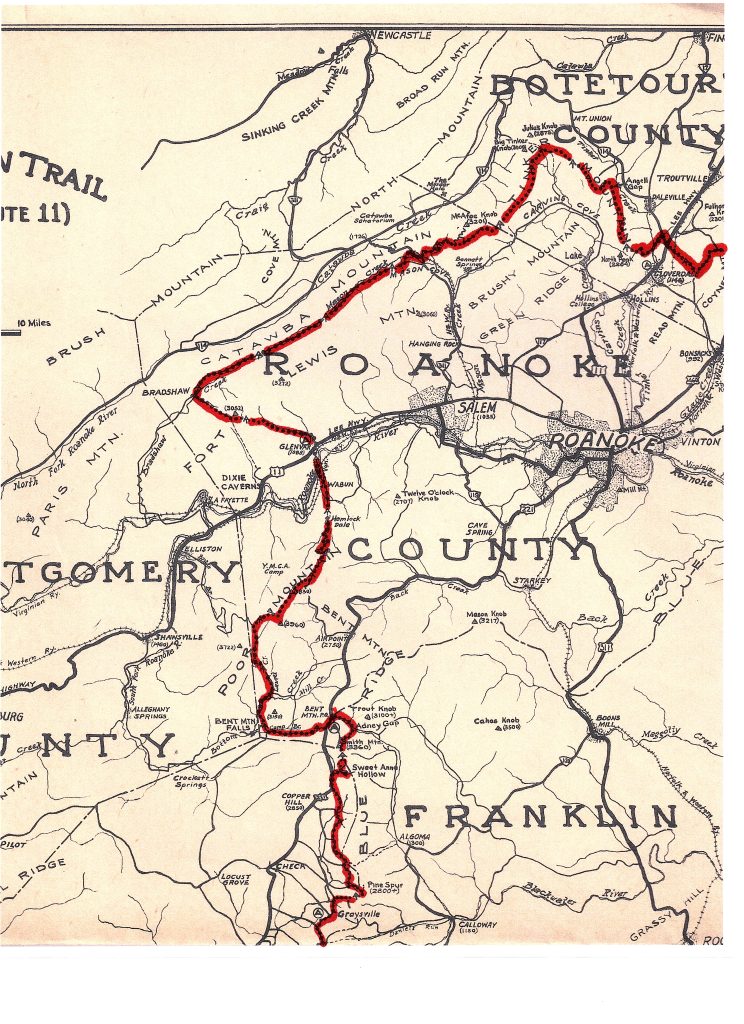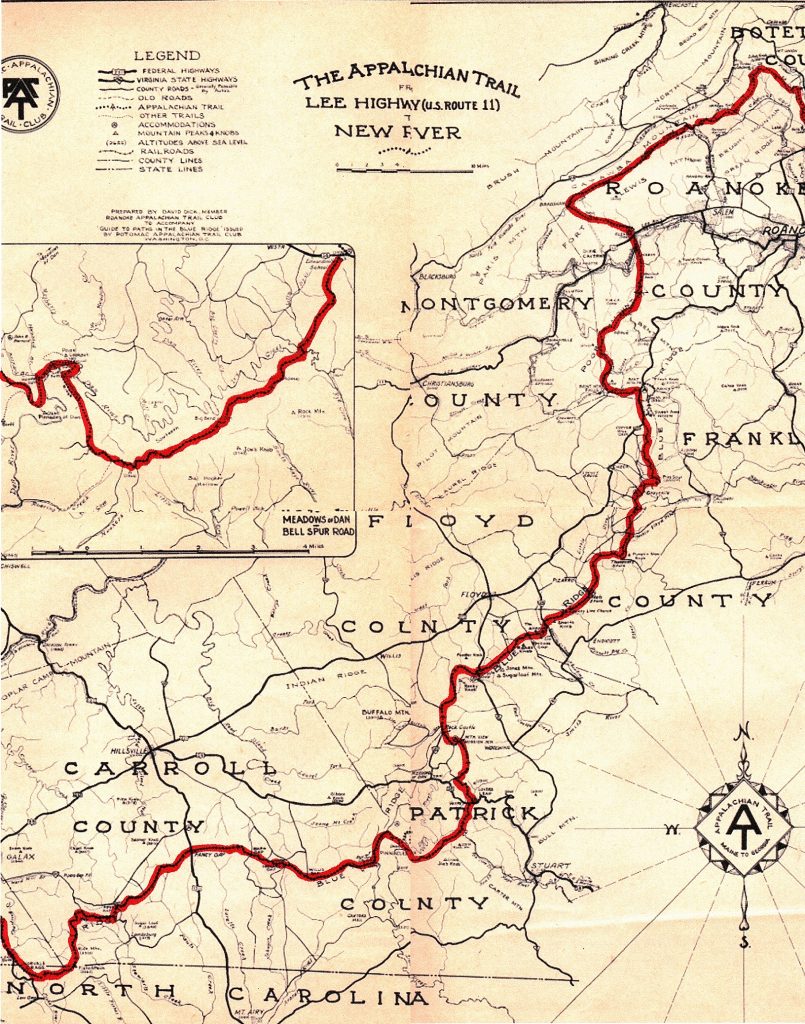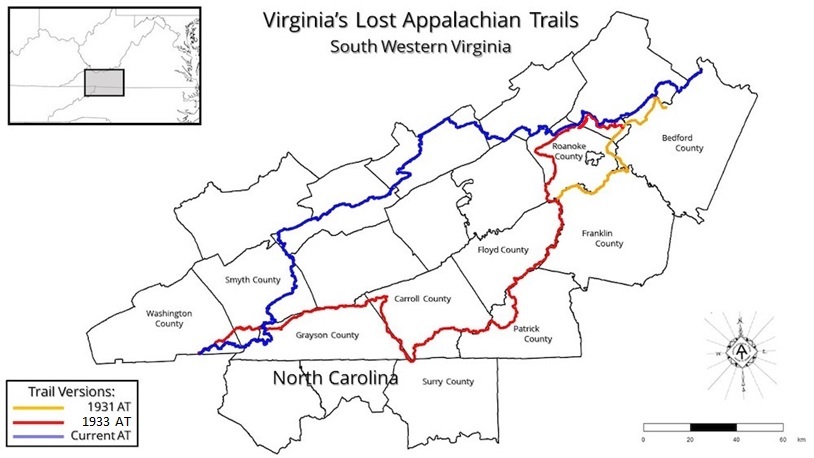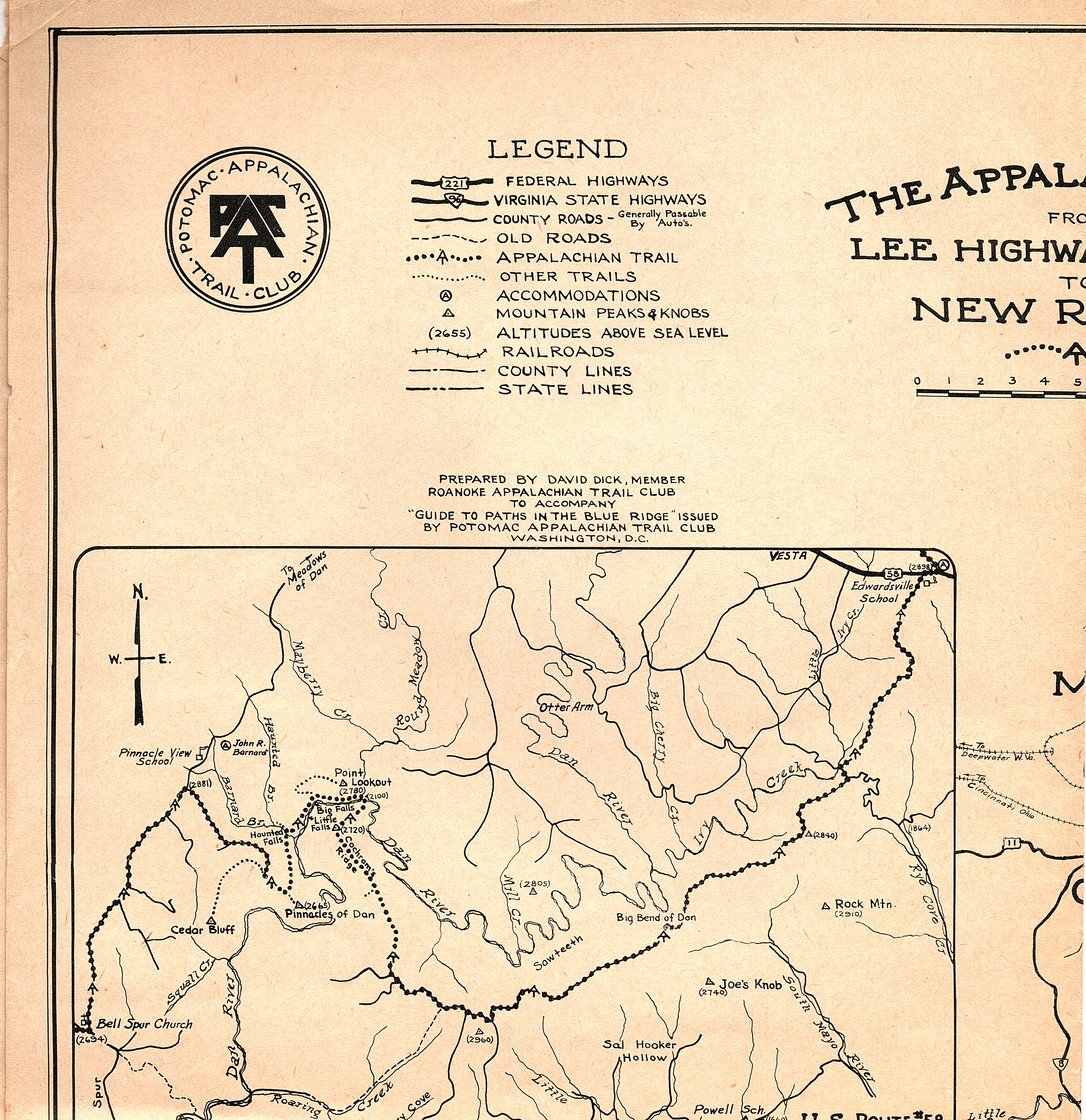Annual Report of the Trail Committee
Roanoke Appalachian Trail Club
November 12, 1933
The Trail Committee during the past year has been primarily concerned with the location, the measuring, and obtaining the trail data for our section of the Appalachian Trail. The first problem that confronted us was the general location of the trail. The trail was originally located south of Roanoke – from Villamont along the top of the Blue Ridge, past Mason Knob to Adney Gap on Bent Mountain. This trail had been measured but not very definitely marked, and it would in a good many instances require a complete relocation. Considering this and also that there are few points of outstanding interest on the southern route, it was suggested and approved by the club to locate the trail along the more interesting route north of Roanoke. This has been done with the help of many of the members not on the committee.
A number of hikes were made by various members of the committee and the club to determine the best location for the trail along the northern route. In locating the trail we considered points of interest, viewpoint, accessibility, grade of the trail, and maintenance necessary to keep the trail definitely marked. At very few places we were able to satisfy all the requirements. Some of the trail will be more difficult to follow until it is more suitably marked and cleared; some of it is steep, other portions offer nothing of interest and in such cases generally follow automobile roads and serve only as connecting links. As the trail is now located there are about 25 miles of automobile roads. Some may be changed so as to cover a more interesting section whenever the other trails are suitably marked and cleared.
Mr. Myron Avery assisted by various members of the committee and the club measured and obtained the trail data for our section of the trail on April 1st, 2nd, 29th and 30th. We also assisted Mr. Avery in measuring, obtaining trail data and marking 33.7 miles of trail from Bent Mountain Post Office to Tuggle Gap in Patrick County. As there is no organization to the care of this section it was routed along existing automobile roads and so requires no maintenance, other than a remarking once a year.
The success of these trips were greatly due to our President who, aside from his other duties, accompanied us on many of the hikes and used his car on most of these occasions. Others whom I believe are due special recognition are Dr. McGinnis who used his car frequently on trips and the Pownalls who accommodated Mr. Avery the two nights he was in Roanoke.
Two short sections of the trail have been marked. 6.80 miles from Black Horse Tavern Site to the county road and 1.2 mile along the road up Tinker Mountain. This is barely a beginning of the trail marking and making in our section. Mr. Avery has made some good suggestions on what should be done on this line. Our entire section should first be marked so that the blazes can be easily followed from end to end. Care should be taken to see that the trail as marked is exactly as described in the trail data. To do this a copy of the trail data should be used in the field while marking, and a member of the measuring party should be present. Where the trail follows roads passable by automobile the route can be marked by using a car. After the trail is entirely marked it can then be improved, where necessary by clipping the underbrush, etc. It will be clearly seen that the initial marking of the trail must not be delayed long lest we have difficulty following the route described.
As a general summary, our section of the trail is 68.29 miles long all of which has been measured and the trail data obtained. 8.0 miles have been marked leaving a balance of 60.29 miles to mark.
David Dick, Chairman
Report on Map
At the request of Mr. Avery I made a map of the section of the trail from Lee Highway [US 11] near Cloverdale to New River, for the Potomac Appalachian Trail Club’s new Guidebook. The Potomac club has had 900 copies printed at a cost of $30.00 from which they sent us about 300 copies. I have incurred an expense of $2.50 in making this map which I feel should be borne by our club. Mr. Avery suggested that these copies sold at 25¢ would bring in considerable revenue for paint, markers, etc.
[Note: the RATC archive includes 3 copies of this map in 2 slightly different versions. The archive also includes a February 1939 article from the Roanoke Times, “Mountain Trails Call Score of Roanokers to Open Each Week End,” that features the same map and a detailed discussion of RATC and its section of the trail. DC]
David Dick




